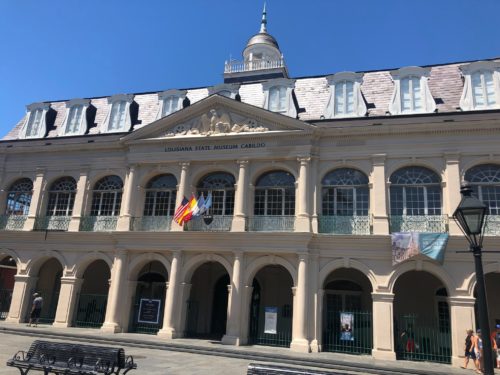
I’m taking a bit of a vacation to New Orleans this week! As a result, if there aren’t many posts or I’m not too responsive, don’t be alarmed! I’m here for the 4S conference of the Society for Social Studies of Science. Here are a few things I’m doing in New Orleans.
4S
I first attended and presented at 4S in Cleveland in 2011. Back in the day, I was working on the social implications of psychiatry. Particularly psychiatric work on paraphilias (i.e., sexual deviations) in the Diagnostic and Statistical Manual of Mental Disorders. I put some of that material in my dissertation, and I reworked it into a part of my book Classify and Label. What did I say about the paraphilias? I argued they’re an example of a broader process whereby science and social practices interact with one another and drive certain forms of marginalization. This process (negatively) impacts both science and the people scientists study.
Anyway, that aside. That’s my history with 4S and the field of science and technology studies. But there’s another reason to love 4S: it’s massive (more than 1,800 people), and it’s full of interesting people and work. In a span of about 3 hours, I heard material on the following topics: the conflation of race and ethnicity in the field of genetics, an ethnographic study of Latinx tech groups, Internet censorship in Russia, the transformation of scientific research in Turkish universities, and a history of Argentinian science under multiple forms of government from 1955-1973.
That’s just a few hours. And it’s only one part of the first day of a 4-day conference.
New Orleans
One of my favorite things about 4S is its commitment to accessibility. Including attention to the history of the city where it’s held. There’s always funding for lower income and/or student attendees. A few basics: there’s a very thorough ethics policy explaining, e.g., harassment, a note to respect pronouns, all gender-neutral restrooms on the main floor, guides for preparing talks for hearing and visual impairments, an official ombudsperson, a special program for younger students, and a very clear commitment to internationalism and transnationalism.
But including the host cities is one of the best features of 4S. In addition to the expected sessions on Hurricane Katrina and climate change, there were sessions on Indigenous science and race. And the president of 4S included a history of New Orleans Indigenous communities in her plenary on the first night.
Sometimes I like to read a bit about the history of a city where I’m traveling. There’s plenty of good in New Orleans’s history, like Dixieland jazz. And there’s plenty of bad, like its centrality to American slavery. Especially American slavery in the period after the US banned the international slave trade in 1807. Before (and during) the trip, I read a book called The Half Has Never Been Told, a history of US slavery focusing on slavery’s centrality to the development of American capitalism.
Museums and Folderol
I’m starting my third day in New Orleans, and I’ll be here for a couple more. While there’s plenty more 4S, I’m spending my Thursday enjoying the city. I always visit the aquarium when I’m in a coastal city, and I’ll probably see the pharmacy museum and/or voodoo museum.
Hope you’re enjoying your Thursday!